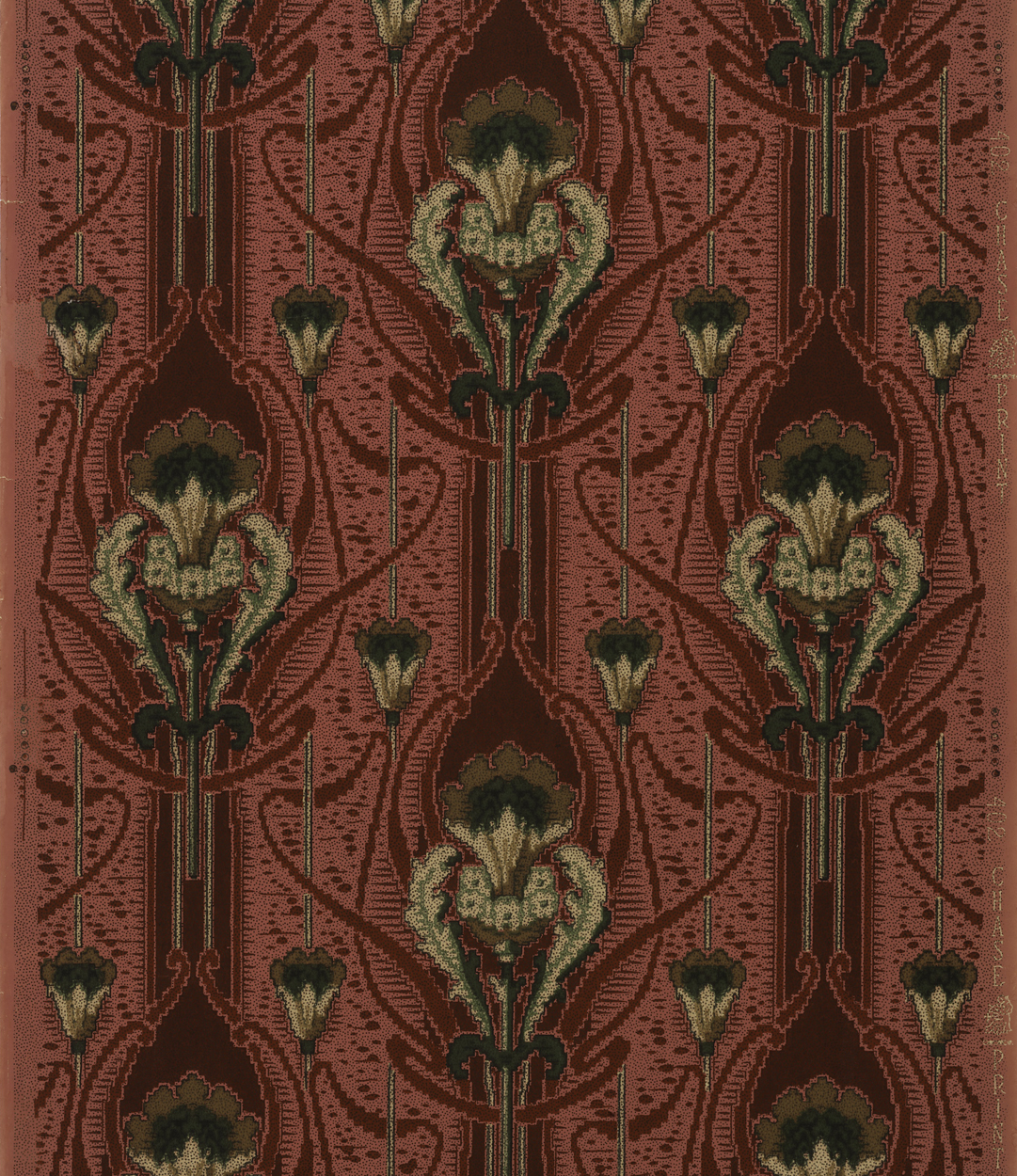This sidewall paper in the art nouveau style is printed in imitation of a tapestry or woven textile as seen in the pixelated-like borders of the motifs. This is part of a matched set which would include a coordinated wide frieze and ceiling paper, a trend which began around 1900 and remained popular until about 1915. While each of these papers could be purchased individually, when purchased as a set, it reduced the decision-making demands on the consumer and created a more harmonious look within a room. Wall fashions of the day called for rooms to be papered from baseboard to crown or picture molding on all four walls. This would be a lot of red! A decorating convention in favor at this time called for the floor to be the darkest element in the room, the ceiling the lightest, and the walls somewhere in between. In support of this, a common design element of wide friezes was to shade the background from the dark color of the sidewall to the light color of the ceiling; this was called a blend and can be seen in this frieze.![44394_db177fc77c5c1299_b[1]](https://www.cooperhewitt.org/wp-content/uploads/2014/11/44394_db177fc77c5c1299_b1-300x134.jpg)
This is the first time the color red was used to this extent on wallpaper. Many different manufacturers began printing many different designs using similar deep shades of red. This passion for red may have been inspired by the production of one of the first synthetic pigments, a red from Alizarin, developed in 1868. This synthetic dye could be produced for a fraction of the cost of the natural product. Design trends are frequently inspired by technological advances. A reduction in the production cost would lead to a lower retail price, leading to greater consumption.
This sidewall will be on view in the Making Design exhibition for the museum’s re-opening December 12. http://www.cooperhewitt.org/events/opening-exhibitions/making-design/
